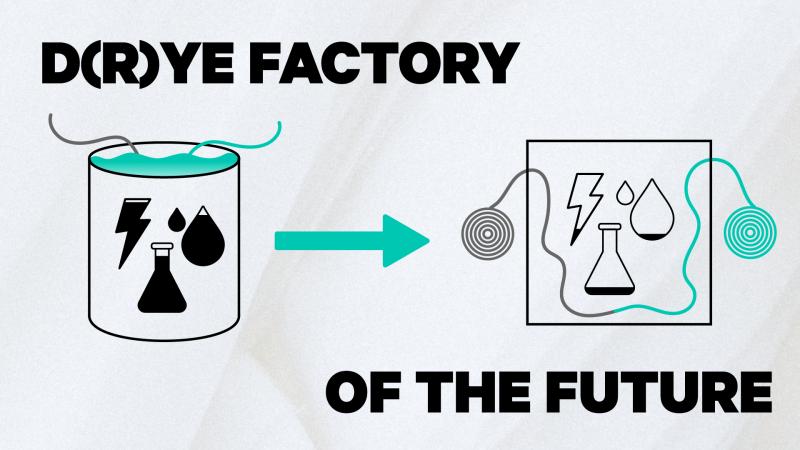In conversation with Smartex: Explore Smartex’s AI-driven solutions transforming quality control and reducing waste
Image by Smartex
18 July 2024
Can you tell us about Smartex, how it started, and what the organisation does?
The textile and fashion industry ranks as the third most polluting sector globally, generating a substantial amount of textile waste. Smartex acknowledges the critical need for sustainable practices within this industry. Our solutions equip textile manufacturers with advanced tools to monitor and control their production lines, enabling them to achieve higher quality and sustainability goals simultaneously.
Gilberto Loureiro, one of Smartex’s founders, was aware of textile defects and their costs long before Smartex’s inception. The son of textile factory workers in Portugal, Gilberto spent his high school summers inspecting fabrics. The first in his family to pursue higher education, he met Antonio Rocha and Paulo Ribeiro, and together they founded Smartex.
Inspired by a friend’s success with the Silicon Valley startup “UpLink,” they envisioned their own startup and identified the textile industry as an ideal target. Despite advanced machinery, the industry’s manual processes are error-prone, causing significant defects.
Drawing from Gilberto’s experience, they aimed to reduce defective fabric. For circular knitting machines, they envisioned a system to detect defects before they become apparent, halting production for adjustments, thus reducing waste of energy, water, dye, and yarn.
The three co-founders, with expertise in textiles, electronic engineering, and software, pursued Smartex while attending graduate school. In early 2018, they made a breakthrough. At a friend’s textile factory, they modified circular knitting machines with high-resolution cameras and lights. Images of the fabric were analysed by machine learning algorithms trained to recognize defects, such as ‘Lycra Dash,’ causing the machine to stop automatically.
Encouraged by this success, they founded Smartex with support from the HAX Accelerator Program in November 2018. Participating in Shenzhen, they expanded Smartex’s technology reach. Today, Smartex technology impacts sustainability, allowing customers to strategically distribute their workforce, achieve higher production speeds with fewer defects, boost quality control, and access comprehensive production and quality reports. Our AI-driven solutions—Smartex CORE, Smartex FACT, and Smartex LOOP—enable manufacturers to elevate quality control, optimise operations, enhance sustainability, and streamline supply chains.
What problem is your innovation solving and how does the technology work?
The textile industry faces low margins and reluctance to adopt digitalization and innovative technologies. Traditional methods, which rely on human vision and manual inspection, are labour-intensive and significantly contribute to the industry’s high defect rate. Convincing sceptical factory owners and decision-makers of the benefits of integrating new technology can be challenging.
Smartex CORE operates in the crucial knitting stage of production, where defect detection has the most profound impact. Using a preventive, real-time approach, it identifies and addresses defects as they occur, reducing textile waste at the source. CORE harnesses AI and machine learning to detect defects in real-time during circular knitting machine production. Integrated with existing machinery, CORE provides continuous monitoring through advanced cameras and sensors, ensuring fast and accurate identification of issues. Smartex FACT, an online platform, offers efficient factory and article management, with detailed operational insights accessible anytime, anywhere. Smartex LOOP ensures a quality record of production and enhances supply chain communication, meeting the demand for data from fashion brands, regulations, and consumers by fostering transparency and collaboration.
With Smartex technology, real-time defect detection and data-driven analysis become the norm, delivering environmental benefits and tangible returns on investment. Enhanced quality control, efficiency, digitalization, and warranty provisions optimise production processes, saving valuable time and resources.
What is the current hurdle you are facing?
The textile industry has chronically low margins, reluctance to adopt digitalisation and innovative technologies, and diverse machinery, practices, and workflows across various cultures. Convincing sceptical factory owners and decision-makers of the benefits of integrating new technology is challenging. Our technology must be universally adaptable and accessible, which is why we work with all machinery brands and models and strategically open diverse new markets.
Slow adoption of sustainable practices leads to significant environmental consequences, contributing up to 20% of global wastewater and 2-8% of global greenhouse gas emissions annually. Smartex operates within the crucial knitting stage, where its impact on resource preservation, defect detection, and waste prevention is profound. Eliminating textile waste at the source affects other valuable resources, including energy, water, yarn, and CO2 emissions.
How would you like the industry to work together more to be able to see innovations like that of Smartex being scaled?
To scale innovations like Smartex, the textile industry must prioritise collaboration, standardisation, and transparency. Enhanced communication between manufacturers, brands, and technology providers is essential. Establishing industry-wide standards for technology integration, digital product passports, traceability, and sustainability practices would facilitate smoother adoption of new technologies.
Joint initiatives, such as cross-company sustainability goals and shared R&D efforts, can drive collective progress. Incentivizing digitalization and sustainable practices through subsidies or recognition programs would encourage reluctant stakeholders to embrace change. Additionally, implementing digital product passports and enhancing traceability can make consumers more aware and educated about where their clothes come from, fostering a more informed and responsible consumer base.
Building a cohesive, transparent, and forward-thinking industry will accelerate the scaling of impactful innovations, benefiting both the environment and the economy.
Other Articles

In Conversation with Bananatex: From Bananas to Backpacks

Reflections from the D(R)YE Factory of the Future Project

